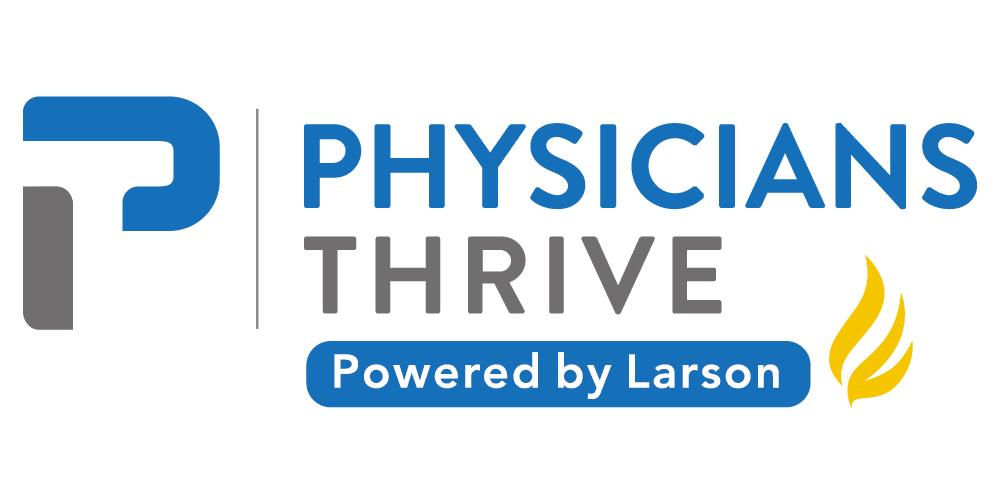It’s never too early to start planning for retirement.
As a physician, you endure more years of school and training than folks in almost any other profession. That means that by the time you start working, you’re already behind in terms of retirement savings.
So how do you catch up? What’s the best way to start building a retirement portfolio?
If you’ve already maxed out your employer 401k or 403b, it’s time to start looking for other long-term savings vessels to protect your assets.
One great way to fund your retirement is through a backdoor Roth IRA.
This retirement plan enables you to maximize your savings by working around the income constraints of other plans, while still receiving the tax benefits.
Essentially, a backdoor Roth IRA is a way to convert your traditional IRA account into a Roth account. Converting your account has massive tax advantages, and lets you contribute more money than Roth IRAs typically allow.
Today, we’ll break down everything you need to know about backdoor retirement plans.
Understanding IRAs
Before we jump into the benefits of a backdoor Roth IRA, let’s cover the basics. The acronym “IRA” stands for “Individual Retirement Account.”
An IRA is a personal savings fund designed for retirement. It’s different from a regular savings account or money market account because there are special tax incentives. There are also certain restrictions.
There are two main types of IRAs: the traditional IRA and the Roth IRA.
Both types of IRAs offer unique advantages. The main difference between a Roth IRA and a traditional IRA is when you’re taxed.
Traditional IRAs
Traditional IRA contributions are tax-deductible subject to certain income limits. Any money put into an account can be written off on your income taxes as a tax deduction.
Since deposits are tax-deferred, you pay income taxes when you transfer funds out of your IRA during retirement.
There are restrictions, of course. For instance, if neither you or your spouse has a 401k, you may not be able to write off your contributions.
To contribute to an IRA, you must be under the age of 70 ½. If you’re under 50, you can contribute up to $6,000 per year in 2019. Once you hit 50, you can start contributing $7,000 per year. These amounts change every year, so be sure to check your contribution limits annually.
You must also withdraw at least part of your savings before you turn 70½.
Roth IRAs
A Roth IRA is similar to a traditional IRA, but there are a few significant differences. For example, deposits are not tax-deductible. You are not taxed when you withdraw money.
The other major difference is that your modified adjusted gross income must be below certain thresholds (less than $122,000 if single, less than $193,000 if married).
So why would you want to pay taxes now, instead of later? For one, withdrawals from a Roth IRA aren’t considered taxable income. This is useful when trying to qualify for Social Security during retirement.
But perhaps the greatest benefit is that the money in a Roth is not taxed as it grows.
Another advantage of a Roth plan is that first time home buyers are allowed to withdraw funds to purchase their house.
And, you can make Roth IRA contributions at any age. You won’t take a tax hit for contributing after age 70 ½.
As we mentioned above, these plans have income limits, which physicians often exceed. This is where the backdoor IRA comes in.
What is a Backdoor Roth IRA?
Backdoor Roth IRA conversions are a way to transfer your traditional IRA savings into a Roth account.
Essentially, this helps you to get around Roth IRA income limits. You’re able to reap all the benefits of a Roth account while still bringing in more than the annual income limits.
There are two main benefits:
Tax Benefits
With a backdoor IRA, you pay taxes when you convert your income. That way, you don’t have to worry about paying a larger percentage if you move into a higher tax bracket as your career grows.
Once converted, the money in your new Roth account grows tax-free.
Withdrawal Stipulations
Traditional IRAs require you to start making withdrawals by the age of 70 ½. With a Roth, you never have to withdraw at all. You can leave as much money as you want in your account and let your savings grow tax-free for decades.
This plan is ideal for physicians who have supplemental income or investments. It’s also great for high earners who have significant savings or want to pass the most amount of money possible onto their beneficiaries.
How a Backdoor Roth IRA Works
If you make more than the annual Roth income limits, a backdoor conversion could be a financially savvy decision.
A Roth IRA conversion is a two-step process:
- Deposit money into a traditional IRA as a non-deductible contribution (which has no income limits).
- Move the money from your traditional IRA into a Roth IRA using a Roth conversion.
It’s really that simple.
There’s one crucial thing to keep in mind: You are only allowed one Roth conversion per year. That means that you should convert as much as you can in one large sum. Otherwise, you’ll have to wait until the next year to convert more.
Since the money grows tax-free, it is often suggested that you convert the money at the beginning of the year. This allows the money in your account to compound for a longer period of time.
While it is possible to do the conversion on your own, we suggest you consult with a tax planning professional. They will be able to explain the benefits, as well as the potential downsides.
Is a Backdoor Roth IRA Legal?
While a Roth conversion might sound like you’re gaming the system, it is completely legal.
The backdoor plan is not a way to dodge taxes. If you convert a traditional account to a Roth account through this method, you’ll pay taxes on all the money you convert.
Remember, a traditional IRA doesn’t require you to pay tax money up front. A Roth IRA does. So when you make the conversion, you’ll have to give Uncle Sam his tax dollars.
The beauty of the Roth account is that it allows you to let your money grow untaxed for as long as you’d like. You can also make tax-free withdrawals throughout your retirement or pass the money on as part of your estate.
It’s an ideal option for physicians who expect their income to rise as they advance in their careers. With a backdoor Roth IRA, you pay your tax contributions now (when your taxable income is likely to be lower), rather than pay them in the future (after your income increases).
Of course, if you think your taxable income will decrease with age, a conversion might not be right for you.
How to Set Up a Backdoor IRA
There are a few steps to setting up a backdoor Roth. Below we are outlining the very basics of the process.
Disclaimer: We highly recommend that you consult with a trusted financial advisor to help you in the conversion process. Most financial institutions will handle the process for you, so don’t make it harder than it has to be.
Step 1: Open a Traditional IRA Account
Contact your financial institution and ask them to open up an IRA in your name. Once open, contribute as much as you can afford.
Step 2: Open a Roth IRA Account
Next, open a new Roth IRA to convert your funds. This is the account where you’ll transfer your savings.
You must open it through the same company that manages your traditional account. Most banks won’t allow you to do a backdoor conversion unless you have a Roth account with them.
In most cases, the best thing to do is to open your Roth account on the day you plan to convert.
Step 3: Empty Your Traditional IRA
When you convert your retirement account, empty all of your existing IRAs. This includes any other traditional accounts as well as SEP IRAs and Simple IRAs. Your 401k can stay put, but everything else should move.
The IRS has a regulation called the IRA Pro-Rata Rule. Under this regulation, all IRAs are lumped together to determine a person’s tax liability. If you have multiple IRAs, you’ll pay the same tax rate for pre-tax and post-tax earnings.
Once again, it’s smart to consult with a professional accountant. If you tell them about your backdoor Roth contributions, they’ll help you determine the best course of action.
Step 4: Pay Your Taxes
This is the most important step. As long as you pay your fair share of taxes, the backdoor conversion is entirely legal.
You pay taxes on all money deposited into a Roth IRA account. That means you’ll have to pay taxes on every dollar that is converted from your traditional IRA.
Have your accountant help you with the taxes. If they aren’t involved directly in the process, let them know about your Roth IRA conversion. They’ll file IRS Form 8606 when you file your taxes for that calendar year.
Step 5: Repeat Annually
As long as tax laws remain the same, you can repeat this process every year. It’ll help you save a significant amount of money throughout your medical career.
Take full advantage of this option by contributing the maximum amount allowed at the beginning of every calendar year.
Common Mistakes to Avoid
A financial advisor can perform a backdoor Roth conversion with their eyes closed. The rest of us have a tougher time with it. There are a few common mistakes that people make when they try to go through the conversion process on their own.
1. Avoid Pro-Rata Rule Taxes
It is best to convert all of the money in your traditional IRA to avoid heavy tax consequences. If you leave money in any of your IRAs, your Roth will accumulate tax liabilities alongside your traditional accounts.
2. File your IRS Form 8606
The IRS Form 8606 is crucial to any backdoor IRA plan. If you don’t pay your taxes, you can bet that the IRS is going to find out eventually.
As a physician, you’re fortunate enough to earn more than the average American. But because of those high-earners, you’re exposed to more tax liabilities.
If you want to avoid paying high taxes later in life, taking advantage of a backdoor Roth IRA is a great opportunity.
If you have any questions about a Roth conversion, feel free to contact Physicians Thrive. We’re more than happen to discuss the complexities of this powerful financial tool.
Looking to stay up to date with our latest physician insights? Follow us on Twitter to be the first to hear about our newest articles.









































